Meadow
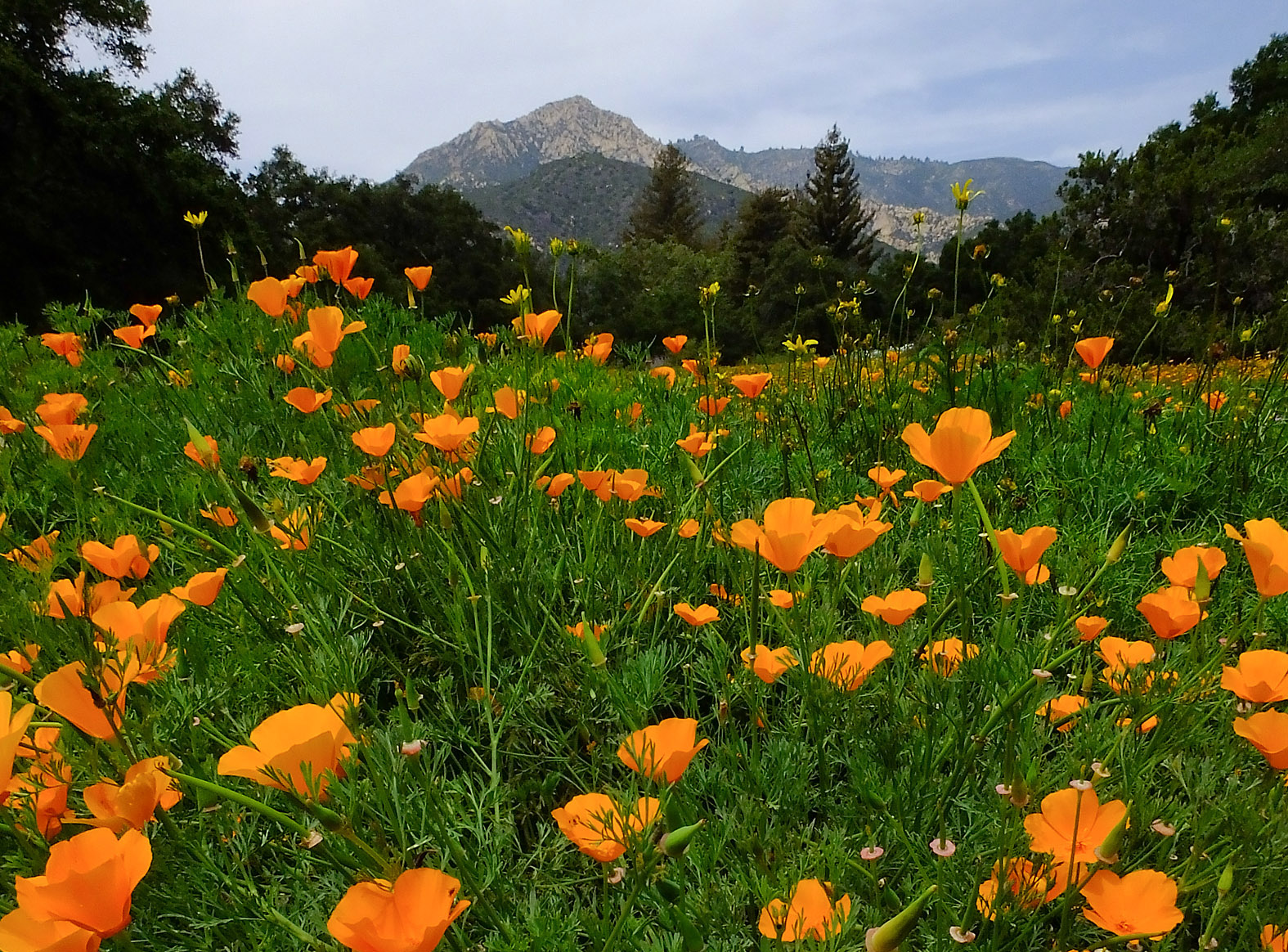
California’s Prairie
Reservoirs of Biodiversity
and Beauty
As the most iconic section of Santa Barbara Botanic Garden, the Meadow Section displays many of the plants found in California’s rich grasslands. The vast majority, some 90%, of the state’s rare and endangered plant species reside in grasslands. This habitat faces threats from development and the invasion of nonnative species such as mustards (Brassica sp.). This has drastically altered fire ecology and species composition in these habitats.
The remaining grasslands of California are some of the most awe-inspiring places on Earth, especially during a superbloom year.

Noteworthy Plants
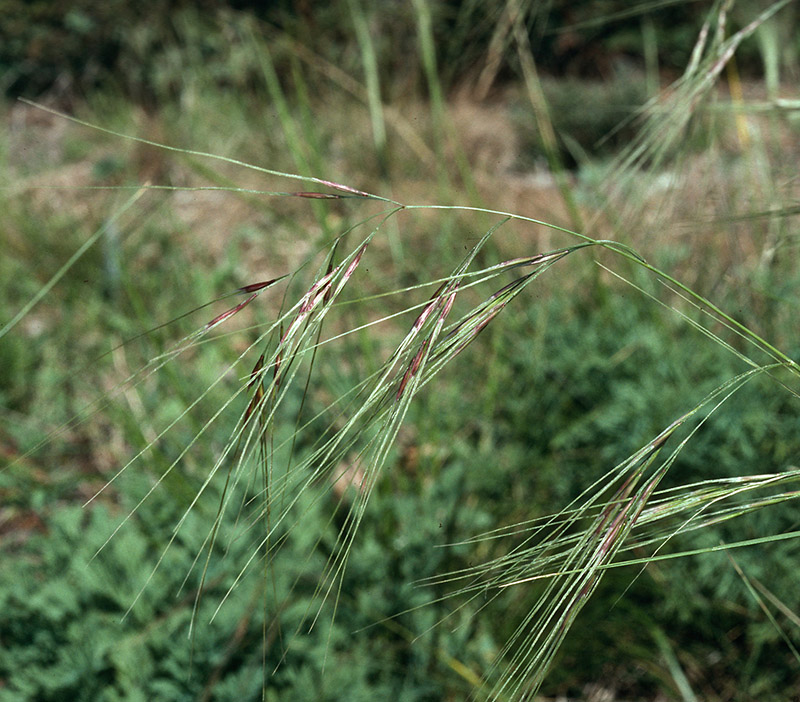
Purple needlegrass
Stipa pulchra
This is California’s state grass, a beautiful bunchgrass found throughout the state. It is thought to be the main species in grasslands prior to European settlement.
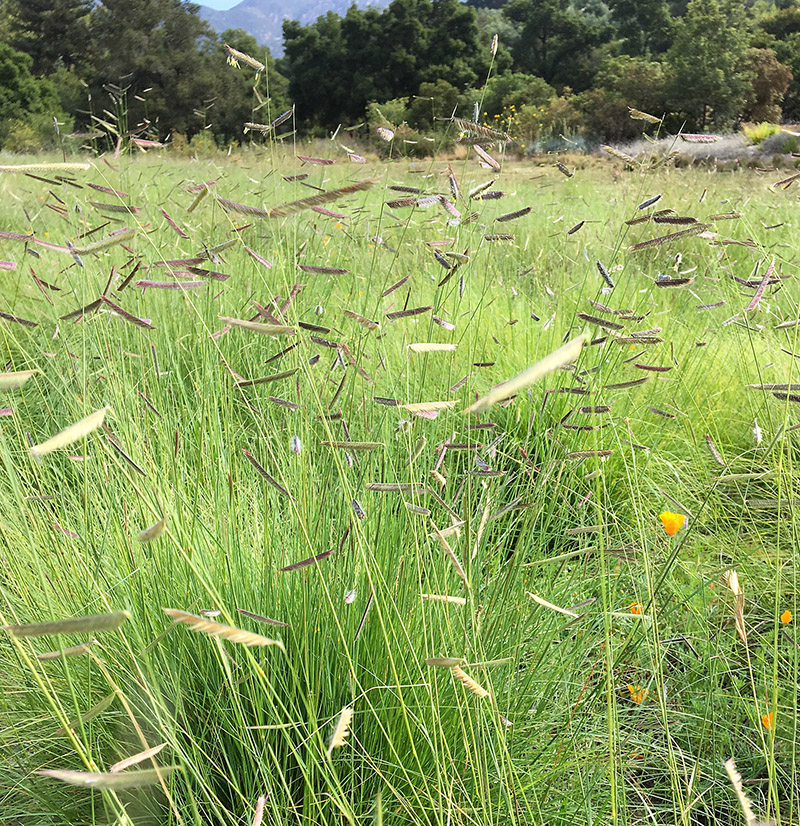
Blue grama grass
Bouteloua gracilis
This perennial bunch grass is native to grasslands in California and much of North America, making it a favorite lawn substitute in many locations. During late summer, look for the distinctive “eyelash” seed heads that add a feathery appearance to the landscape.
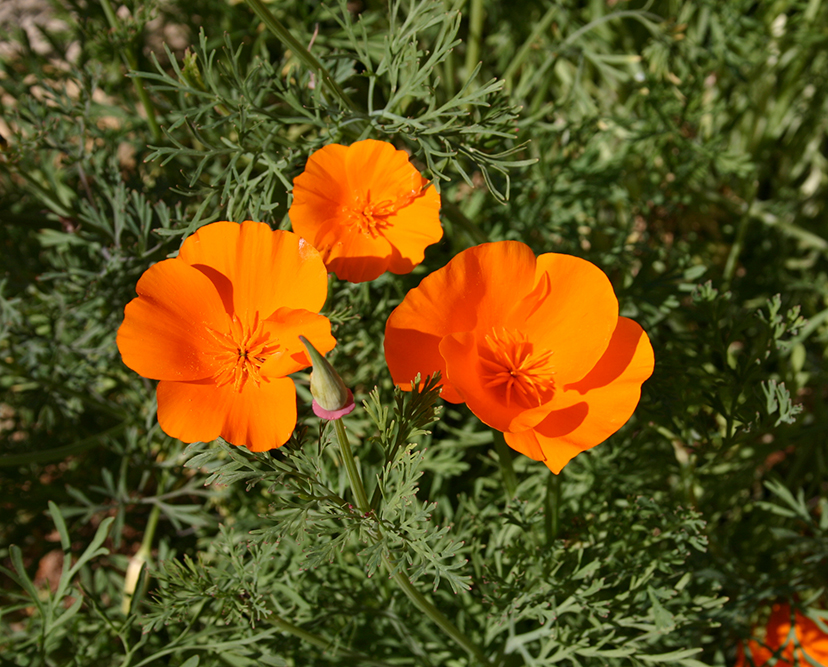
California poppy
Eschscholzia californica
The iconic symbol of California and the star of the superbloom in places like Antelope Valley, the California poppy is beautiful and easy to grow.
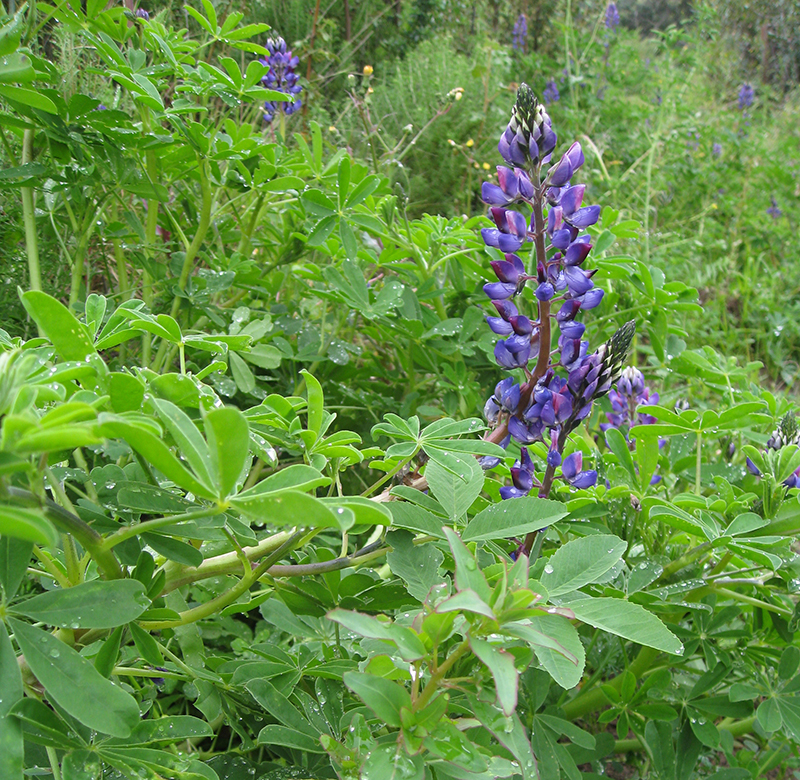
Arroyo lupine
Lupinus succulentus
Distinctive leaves and striking purple blossoms make this member of the pea family (Fabaceae) a favorite of many wildflower landscapes throughout the coastal mountains of California.
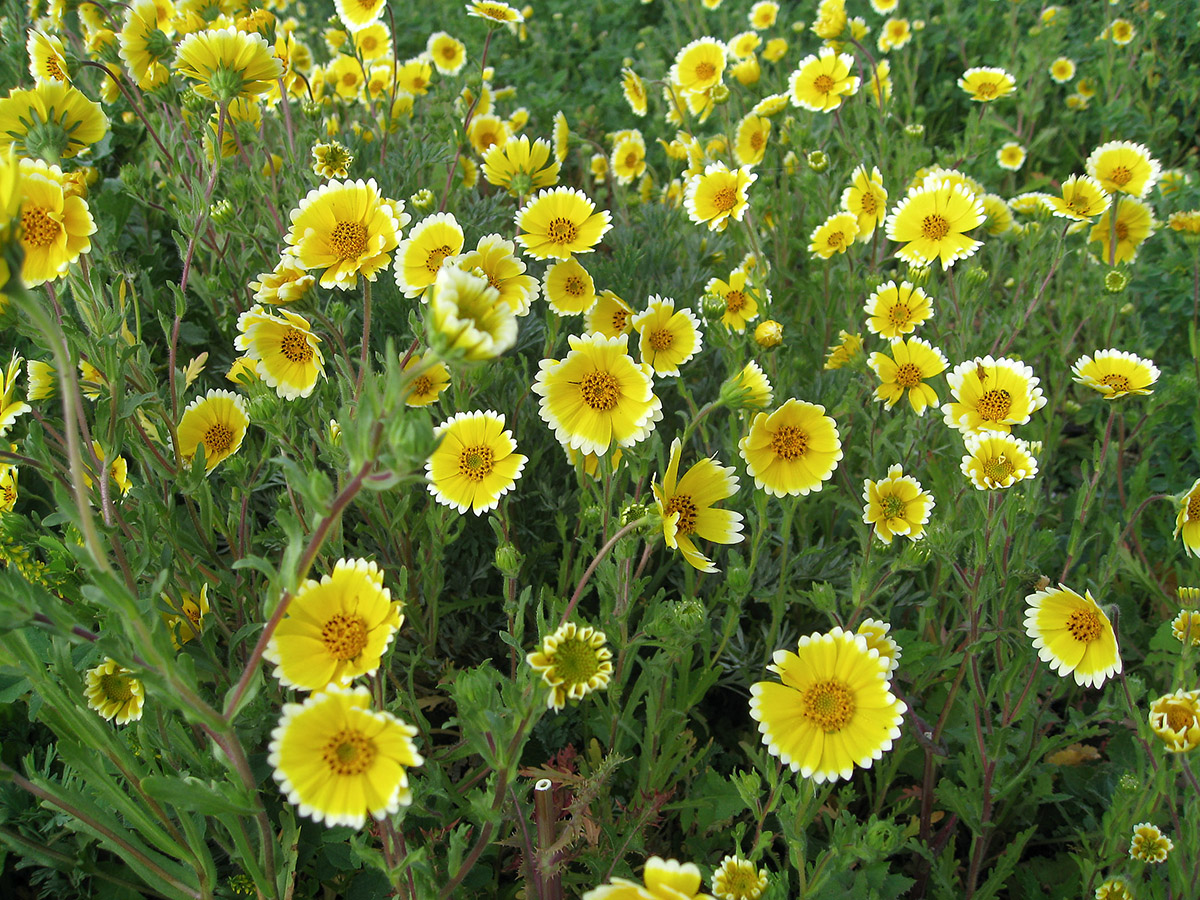
Tidy tips
Layia platyglossa
The two-toned flower heads of this member of the sunflower family (Asteraceae) add splashes of color to meadows and grasslands up and down the state. Close examination of the flowers will reveal that they are actually made up of dozens of individual florets. Can you spot them?
seasonality
What Is a Superbloom?
Almost half the plants native to California are annual species that have short life cycles. Annuals stay dormant as seeds until conditions are just right. Then they quickly grow, flower, set seed, and die. If conditions are perfect (think mild spring weather and lots of winter rain), all the plants may flower at once, creating what is called a superbloom. These superblooms can cover hundreds of square miles and are even visible from space.
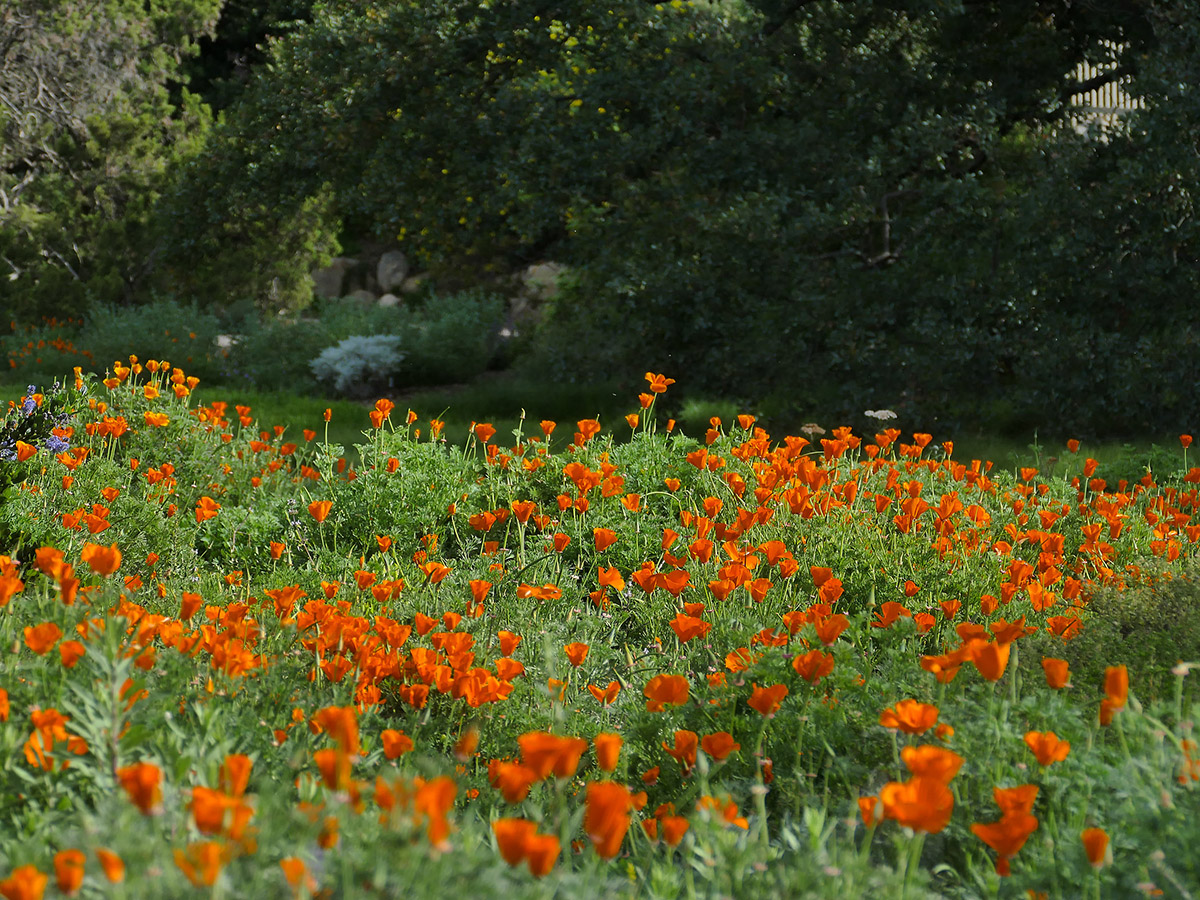
California poppy (Eschscholzia californica) flowers close at night but are open in sunny and calm weather — perfect for their pollinators, native bumblebees (Bombus spp.). (Photo: Randy Wright)
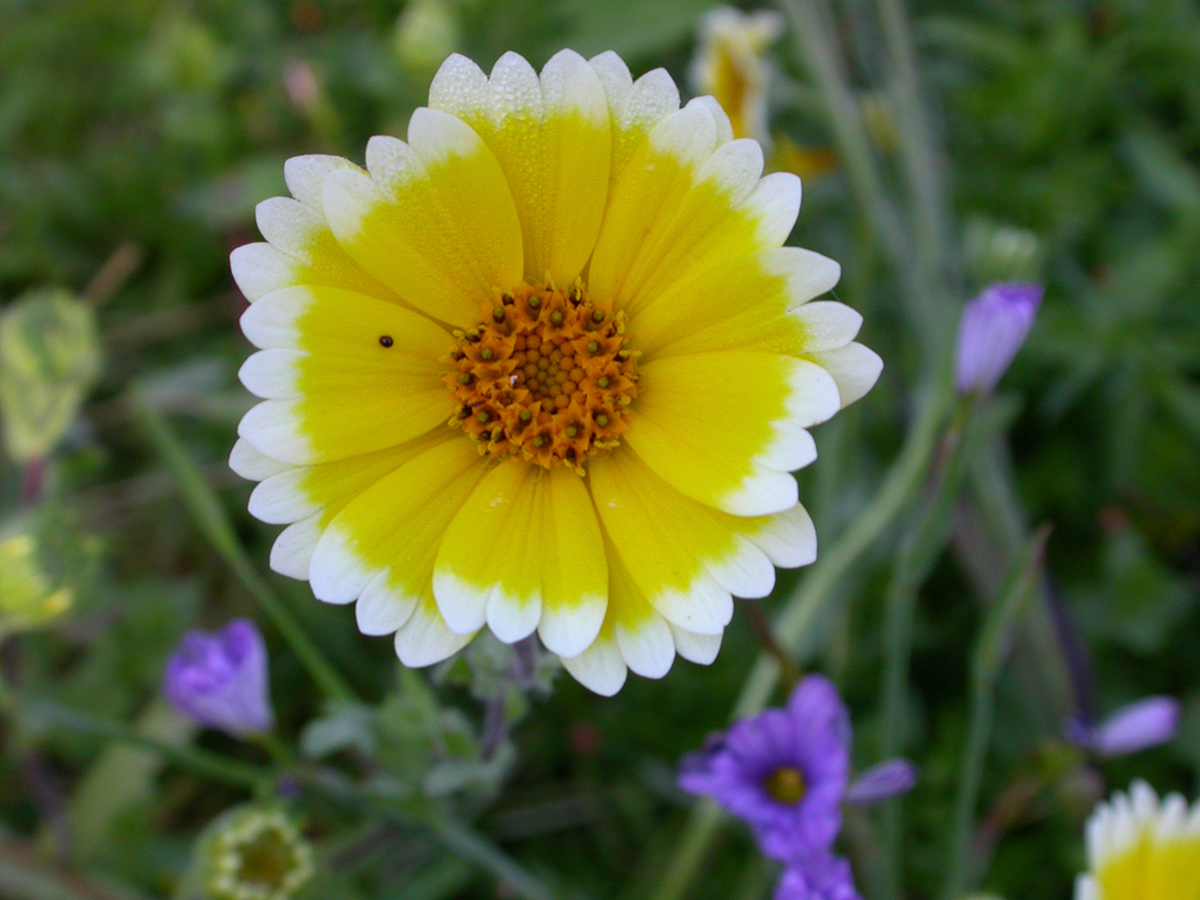
Tidy-tips (Layia platyglossa) is an important nectar plant for checkerspot butterflies (Euphydryas spp.). (Photo: Elizabeth Collins)
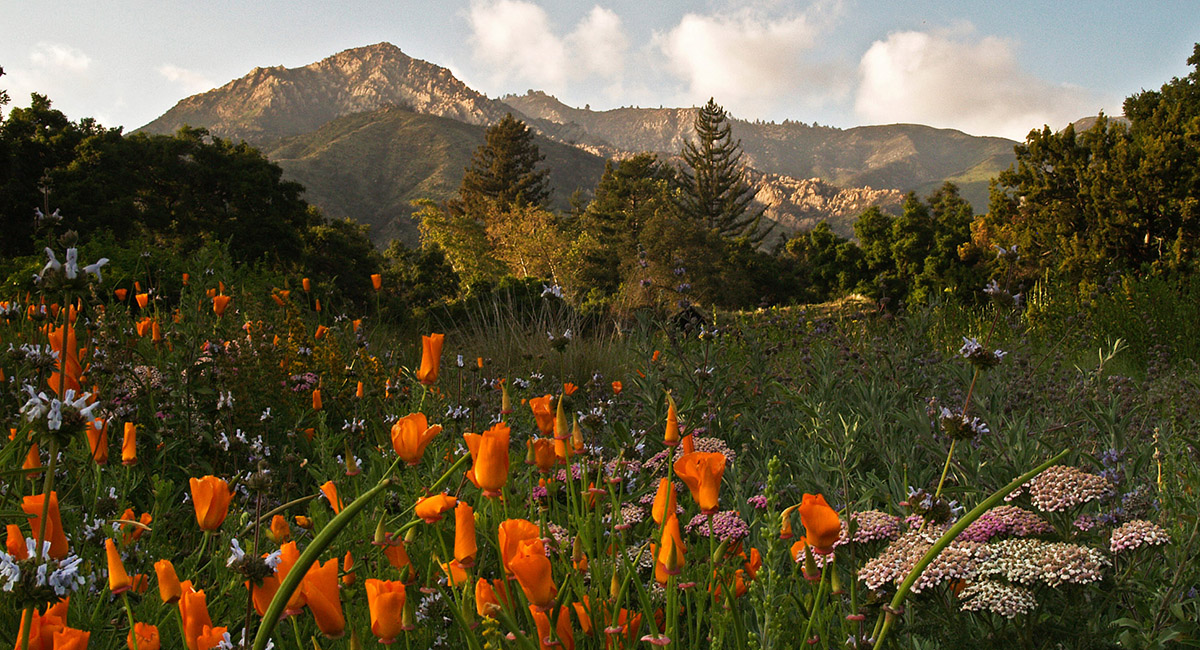
Meadow wildflower display (Photo: George Welik)
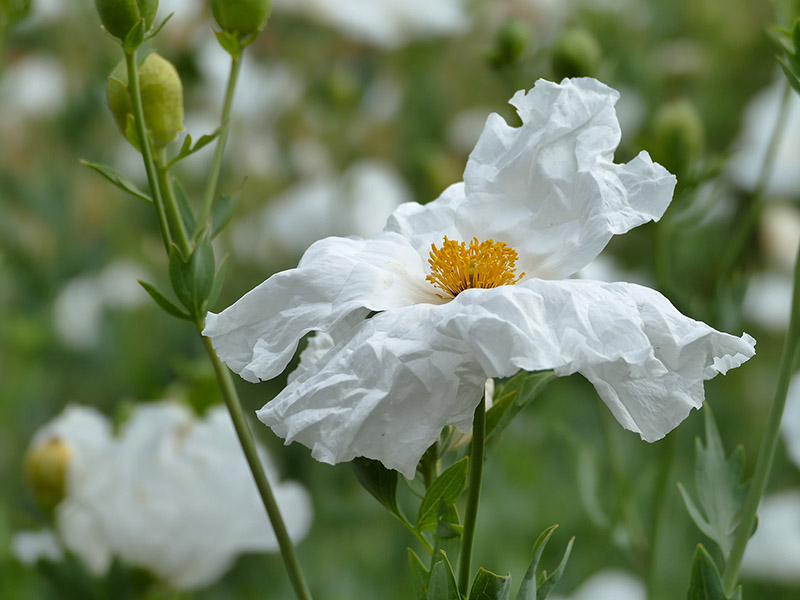
Matilija poppy (Romneya trichocalyx) is a “fire follower” and can thrive in the open spaces created after wildfires. (Photo: Randy Wright)
 Donate
Donate